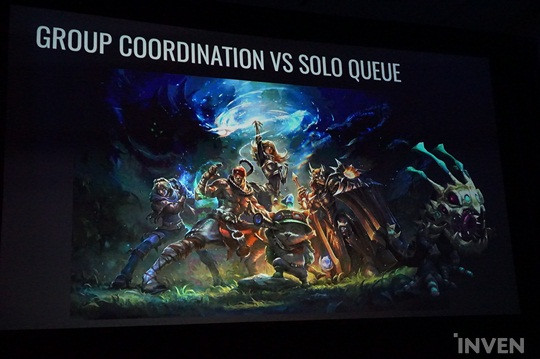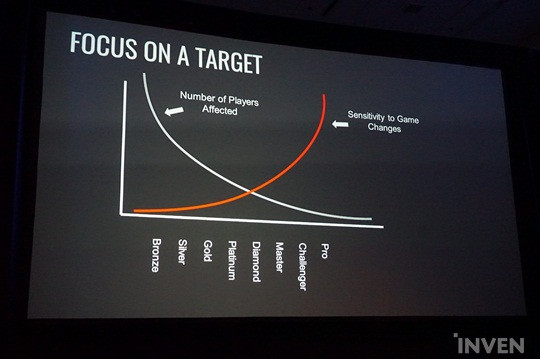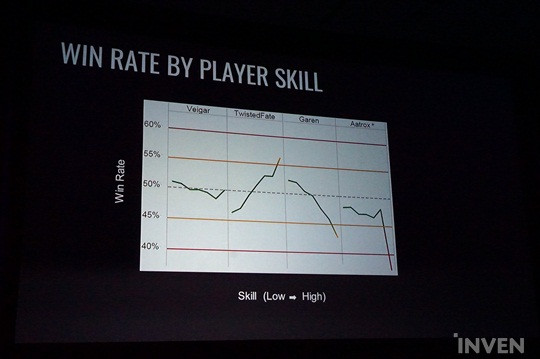
Balancing Champion stats is one of the most popular issues among Summoners that draws a lot of attention and sparks a round of heated conversation especially when new patches are introduced. Greg Street, in his “Balancing League of Legends for every player, from Bronze to Bengi,” discussed the challenges of balancing the game in ways that can appeal to the wide player population with different levels of skills. He explained what it is tricky to balance Champions for different groups of players, how it should be adjusted to fit as broad group of players as possible, and how Riot conducts the job to release new patches every other week.

The same rule applies to all
Street explained why it is important to make everyone play by the same rule despite the hassle of balancing the game for different cohort groups. He explained that maintaining the same rule makes it easier for those watching eSports or livestreams because people should know how the game works in order to enjoy watching it. Street pointed out that doing so also helps people differentiate who is good and who is bad. Moreover, often times when people wish to learn how they can become a better Summoner, they often learn by watching how pros and other skilled players play the game. Many people do this, and setting separate rules in professional realm will likely kill such experience and decrease overall viewership of LoL.

Challenger and Bronze are two different worlds
Not only do professional LoL players have sharp and agile mechanics that are hard for amateurs to catch up, but they also perceive the game differently. This results in varying player experience. Upper tier players, including pro gamers, usually play the game with their teammates or friends of equivalent skill level. This allows them to maximize the strategical aspect of LoL and makes it easier to coordinate. Meanwhile, a lot of lower tier players tend to play the game in solo queue. Such difference results in varied perception of how strong or weak certain champions are. Street pointed out Kog’Maw as an example. He described Kog’Maw as a glass cannon Champion that requires allies’ protection for maximum utilization, and that Kog’Maw would feel much weaker in lower tier matches where there is less coordination.

How they should adjust AI-dependent power like Heimerdinger's turrets is also different depending on the players’ skill level. Lower tier players find it harder to fight against AI units than upper tier players, so balancing AI to fit in pro scene in will make it overpowered while balancing it for lower tier would make it too weak. The same goes with map objectives, because upper tier players utilize buffs better while lower tier players are more likely to waste them. Early game also flows differently in different tiers. Small mistake in early game can result in a snowball in pro level, while in Bronze such small mistakes do not matter as much.

Different types of data that influence how the balance is tweaked
Riot Games gathers many different types of data that help the team find its equilibrium point in balancing the Champions. How the Summoners’ population is distributed in different tiers is one example, in which the vast majority of players are in the lowest three tiers. It is also true, however, that although Bronze, Silver and Gold tiers have the most amount of players, they are the groups that are less sensitive to the balance tweaks on Champions. Upper tier groups have much fewer players, but they are more sensitive to how Champions are balanced, especially in pro scene where changes to the meta often means that the team has to come up with different strategy.

Each champion’s win rate is also different according to how skilled the player is. For example, Twisted Fate’s win rate is low in Bronze tier but it gets higher in upper tiers. Garen, on the other hand, has declining win rate as the tier goes up. Difference in skill floors and ceiling also exist in different Champions. Aurelion Sol has very low win rate among the ones that played him for the first time, but it increases sharply as the players get used to playing him. Volibear, on the other hand, already has decent win rate among those who have just begun playing him. Playing him more often also increases the win rate, but it is not as dramatic as that of Aurelion Sol. Due to win rate being a fluid value rather than a fixed one, it is often the case when low tier players try to imitate the things pro LoL players do, such as following their picks and items in hopes to win more matches. Such practice, however, does not guarantee victory because the player’s mechanics and team-wise coordination are different.
How Riot Games conducts the job
Riot owns and operates its own Playtest Team, of which many are former LoL pros with extensive experience and knowledge about the game. They are the people that are largely responsible for balance patches, and also the first responders to player feedbacks when it comes to impressions about the game's balance. Street added that Playtest Team is especially helpful when Riot Games is trying to get early expressions of beta releases.

Determining when to drop big patches is also a matter of concern. Street pointed out that the team tries not to introduce big patches when the ladder is heated up. Riot Games introduces the most disruptive changes in preseason and midseason when the game is at a more stable state. Newly introduced patches tend to break balance upon arrival, so it is better to introduce them when players are less stressed about climbing up the ladder.


What else influences Champion picks and how the team conducts the process
In often cases, maintaining the League’s eSports viewership can be more important than maintaining fairness in Champion balance. If imposing necessary balance tweak can possibly make the game boring to watch, Riot can choose not to make the change in order to keep the game’s viewing pleasure. Negative data suggesting that the Champion has low win rate can skew people away from playing that Champion, so Riot Games can choose not to reveal such data to maintain the Champion’s pick rate. Street and his teammates are also aware that Champions’ strength is not the only factor that facilitates player’s decision to pick that particular Champion. Players often choose certain Champions just because they like them, such as how those that have fantasy towards blade-wielding characters play Master Yi or Yasuo.

Riot Games’ Dedication to healthy ecosystem
Today’s session about how Riot Game balances its Champions has shown the multiple layers of issues Riot has to deal with in establishing the right equilibrium point for its Champions. In-depth analysis of various data that influence competitive ecosystem showed that the company has been dedicating itself to maintaining the right point of equilibrium for all Champions. "Balance matters for longevity and engagement." Riot Games will continue tweaking the game in order to make Summoner's Rift a healthier place for noble competition.
Sort by:
Comments :0






